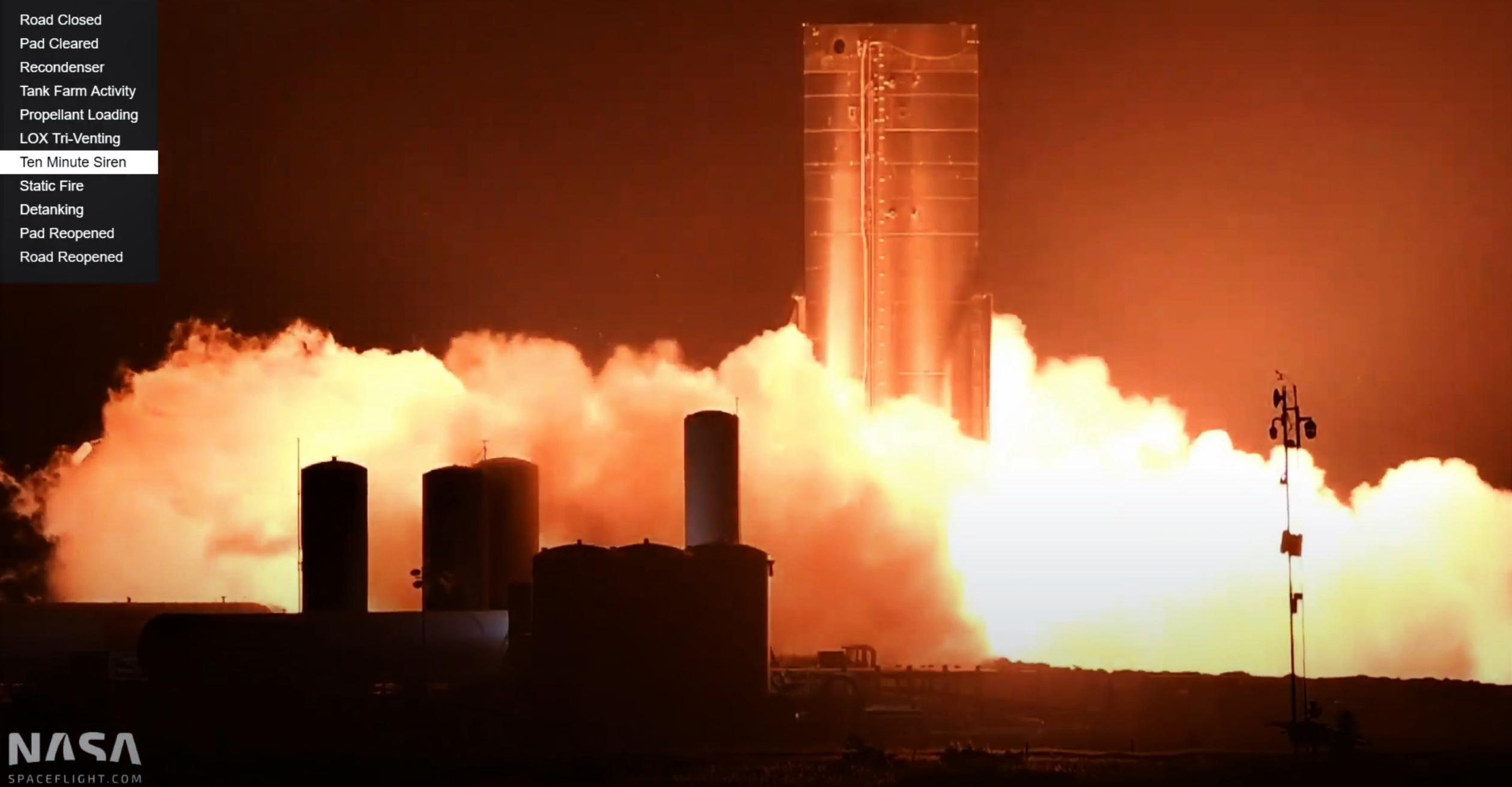
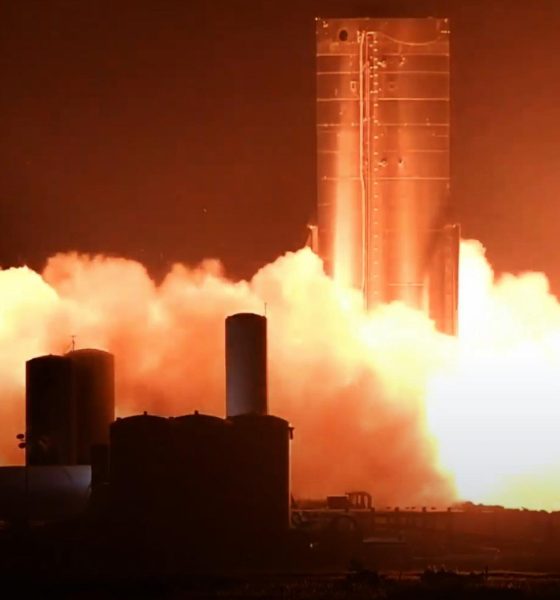
News
SpaceX Starship fires up three Raptor engines in prelude to high-altitude flight
Update: At 1:21am CDT (6:21 UTC) on October 20th, Starship SN8 ignited all three of its Raptors’ preburners, producing a spectacular fireball noticeably larger than the one produced during the rocket’s first October 19th preburner test. A mere two hours later, with no break in between, the steel rocket prototype fully ignited all three Raptor engines for the first time ever, likely producing thrust equivalent to ~90% of a nine engine Falcon 9 booster for a brief moment.
Crucially, aside from physically demonstrating Raptor’s multi-engine capabilities, Starship SN8 – already a first-of-a-kind prototype – completed and survived a static fire seemingly unscathed on its first attempt. If the data SpaceX gathers from the milestone is as good as the test appeared to be, the company could be just a few days away from installing Starship SN8’s recently-stacked nosecone, followed by a second triple-Raptor static fire test. If that second static fire goes well, SN8’s next task will be the first high-altitude Starship flight test.
Minutes after an adjacent highway was scheduled to reopen, SpaceX’s first high-altitude Starship prototype – serial number 8 – attempted what was likely the first multi-engine Raptor test ever.
At 6:01 am, October 19th, Starship SN8’s trio of Raptor engines were barely unleashed, producing a large fireball indicative of a ‘preburner’ ignition test. One of the most complex rocket engines ever developed, Raptor relies on a maximally efficient but temperamental “full-flow staged combustion” cycle (FFSC), a concise name for the many, many steps required to turn liquid propellant into thrust.
Adding additional difficulty, Raptor’s full-flow staged combustion necessitates ignition of gaseous oxygen and methane in the combustion chamber. Given that the Raptor-powered Starship spacecraft and Super Heavy booster exclusively use cryogenic liquid methane and oxygen, a major challenge posed by FFSC is the need to efficiently turn that ultra-cold propellant into hot gas almost instantaneously. This is where gas generators (or preburners) come in.
In a full-flow staged combustion engine, both oxidizer and fuel require their own separate turbopumps, which then require their own preburners to create the pressures needed to power those turbopumps and the gas the combustion chamber ignites to produce thrust. A step further, to enable high combustion chamber pressure like Raptor’s 300+ bar (~4400+ psi), those preburners need to produce gas at far higher pressures to account for energy losses as those gases wind their way through the engine’s plumbing.
As a result, preburners are possibly the single most stressed system in an engine like Raptor. Unsurprisingly, this has often lead SpaceX to separately test each engine’s preburners as a sort of partial static fire before the actual engine ignition test. This is the test Starship SN8 attempted in the early morning on October 19th, representing Raptor’s very first multi-engine ignition event.
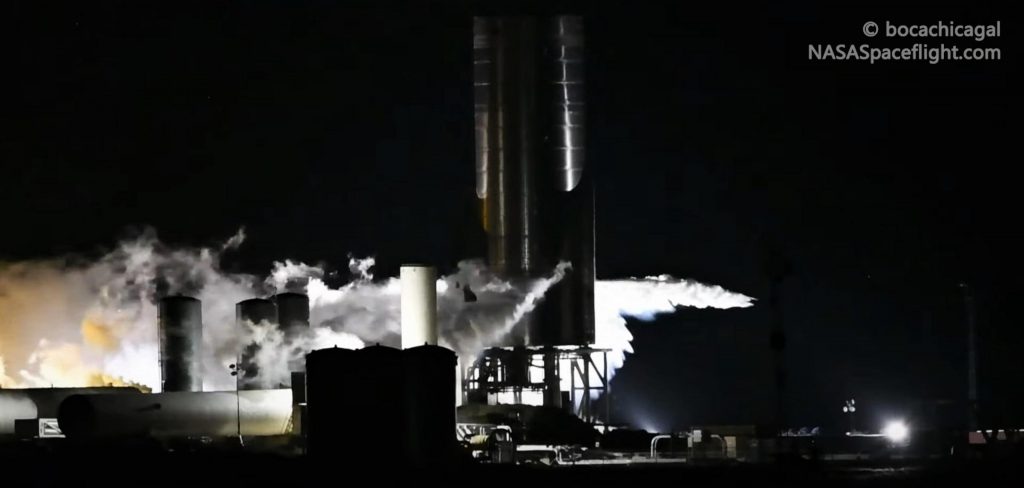
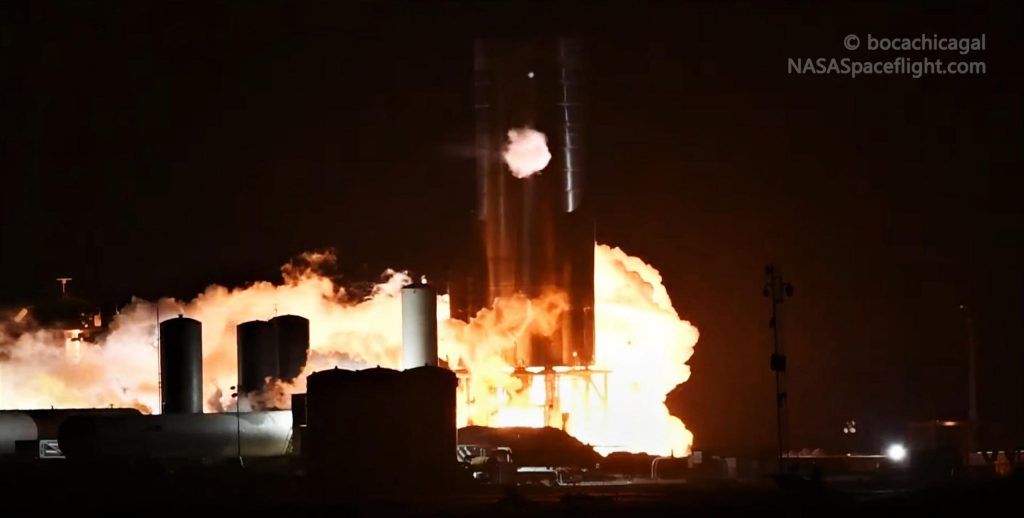
Curiously, moments before preburner ignition, one of the three Raptor engines appeared to command an aggressive jet-like vent of liquid oxygen identical to a vent seen just a few hours prior during the first aborted preburner test. There’s thus a chance that only two of SN8’s three Raptor engines successfully started their preburners
Raptor is the first FFSC engine in the world to fly and – as far as the duration of lifetime testing and volume production goes – is almost certainly the most advanced of the three FFSC programs to graduate to static fire tests. In other words, given that SN8’s test campaign is the first time SpaceX has ever attempted to operate multiple adjacent Raptor engines at the same time, it’s not a huge surprise that progress towards the first three-engine static fire has been cautious and halting. Mirroring its Sunday/Monday testing, SpaceX will put Starship SN8 through another preburner and/or static fire attempt between 9pm and 6am CDT (UTC-5) on October 19/20. Even more 9-6 test windows are scheduled on October 21st and 22nd.
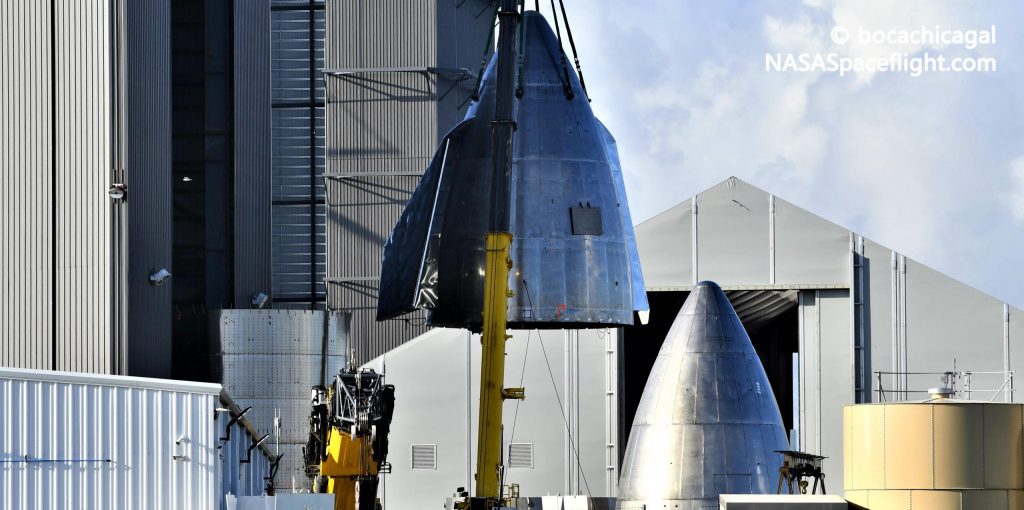
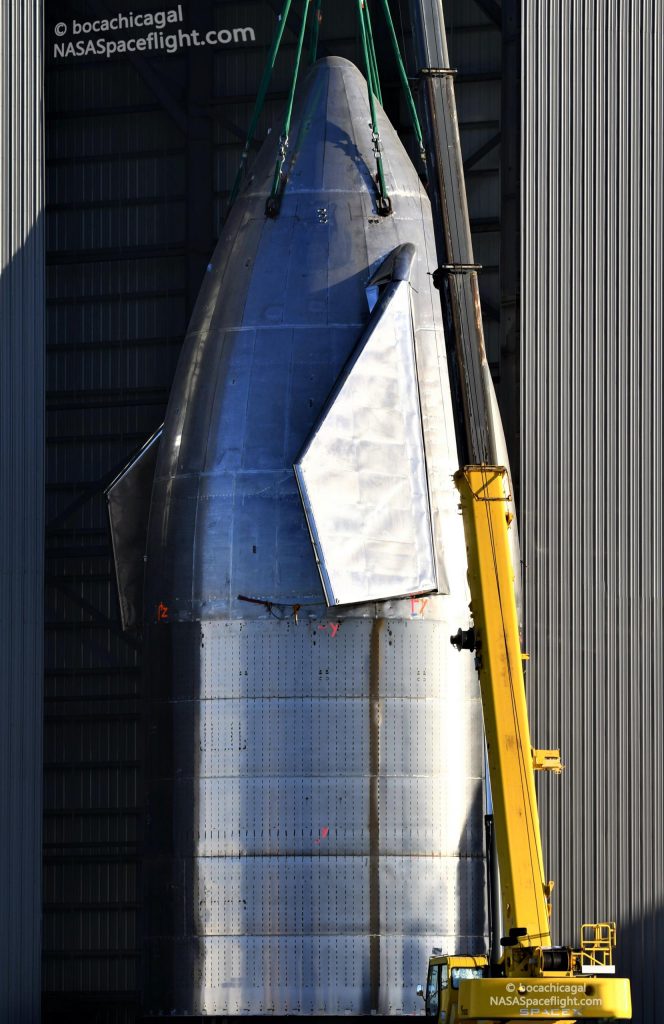
Meanwhile, not long after Starship SN8’s first preburner test was completed, SpaceX teams rolled a section of five steel rings inside a small windbreak and stacked the first truly functional nosecone – already outfitted with forward flaps – atop it. If Starship SN8 survives its first full triple-Raptor preburner and static fire tests, that new nosecone will likely be rolled to the launch pad for in-situ installation, topping off the rocket ahead of a spectacular 15 km (~50,000 ft) flight test.


News
Tesla FSD fleet is nearing 7 billion total miles, including 2.5 billion city miles
As can be seen on Tesla’s official FSD webpage, vehicles equipped with the system have now navigated over 6.99 billion miles.

Tesla’s Full Self-Driving (Supervised) fleet is closing in on almost 7 billion total miles driven, as per data posted by the company on its official FSD webpage.
These figures hint at the massive scale of data fueling Tesla’s rapid FSD improvements, which have been quite notable as of late.
FSD mileage milestones
As can be seen on Tesla’s official FSD webpage, vehicles equipped with the system have now navigated over 6.99 billion miles. Tesla owner and avid FSD tester Whole Mars Catalog also shared a screenshot indicating that from the nearly 7 billion miles traveled by the FSD fleet, more than 2.5 billion miles were driven inside cities.
City miles are particularly valuable for complex urban scenarios like unprotected turns, pedestrian interactions, and traffic lights. This is also the difference-maker for FSD, as only complex solutions, such as Waymo’s self-driving taxis, operate similarly on inner-city streets. And even then, incidents such as the San Francisco blackouts have proven challenging for sensor-rich vehicles like Waymos.
Tesla’s data edge
Tesla has a number of advantages in the autonomous vehicle sector, one of which is the size of its fleet and the number of vehicles training FSD on real-world roads. Tesla’s nearly 7 billion FSD miles then allow the company to roll out updates that make its vehicles behave like they are being driven by experienced drivers, even if they are operating on their own.
So notable are Tesla’s improvements to FSD that NVIDIA Director of Robotics Jim Fan, after experiencing FSD v14, noted that the system is the first AI that passes what he described as a “Physical Turing Test.”
“Despite knowing exactly how robot learning works, I still find it magical watching the steering wheel turn by itself. First it feels surreal, next it becomes routine. Then, like the smartphone, taking it away actively hurts. This is how humanity gets rewired and glued to god-like technologies,” Fan wrote in a post on X.
News
Tesla starts showing how FSD will change lives in Europe
Local officials tested the system on narrow country roads and were impressed by FSD’s smooth, human-like driving, with some calling the service a game-changer for everyday life in areas that are far from urban centers.

Tesla has launched Europe’s first public shuttle service using Full Self-Driving (Supervised) in the rural Eifelkreis Bitburg-Prüm region of Germany, demonstrating how the technology can restore independence and mobility for people who struggle with limited transport options.
Local officials tested the system on narrow country roads and were impressed by FSD’s smooth, human-like driving, with some calling the service a game-changer for everyday life in areas that are far from urban centers.
Officials see real impact on rural residents
Arzfeld Mayor Johannes Kuhl and District Administrator Andreas Kruppert personally tested the Tesla shuttle service. This allowed them to see just how well FSD navigated winding lanes and rural roads confidently. Kruppert said, “Autonomous driving sounds like science fiction to many, but we simply see here that it works totally well in rural regions too.” Kuhl, for his part, also noted that FSD “feels like a very experienced driver.”
The pilot complements the area’s “Citizen Bus” program, which provides on-demand rides for elderly residents who can no longer drive themselves. Tesla Europe shared a video of a demonstration of the service, highlighting how FSD gives people their freedom back, even in places where public transport is not as prevalent.
What the Ministry for Economic Affairs and Transport says
Rhineland-Palatinate’s Minister Daniela Schmitt supported the project, praising the collaboration that made this “first of its kind in Europe” possible. As per the ministry, the rural rollout for the service shows FSD’s potential beyond major cities, and it delivers tangible benefits like grocery runs, doctor visits, and social connections for isolated residents.
“Reliable and flexible mobility is especially vital in rural areas. With the launch of a shuttle service using self-driving vehicles (FSD supervised) by Tesla in the Eifelkreis Bitburg-Prüm, an innovative pilot project is now getting underway that complements local community bus services. It is the first project of its kind in Europe.
“The result is a real gain for rural mobility: greater accessibility, more flexibility and tangible benefits for everyday life. A strong signal for innovation, cooperation and future-oriented mobility beyond urban centers,” the ministry wrote in a LinkedIn post.
News
Tesla China quietly posts Robotaxi-related job listing
Tesla China is currently seeking a Low Voltage Electrical Engineer to work on circuit board design for the company’s autonomous vehicles.

Tesla has posted a new job listing in Shanghai explicitly tied to its Robotaxi program, fueling speculation that the company is preparing to launch its dedicated autonomous ride-hailing service in China.
As noted in the listing, Tesla China is currently seeking a Low Voltage Electrical Engineer to work on circuit board design for the company’s autonomous vehicles.
Robotaxi-specific role
The listing, which was shared on social media platform X by industry watcher @tslaming, suggested that Tesla China is looking to fill the role urgently. The job listing itself specifically mentions that the person hired for the role will be working on the Low Voltage Hardware team, which would design the circuit boards that would serve as the nervous system of the Robotaxi.
Key tasks for the role, as indicated in the job listing, include collaboration with PCB layout, firmware, mechanical, program management, and validation teams, among other responsibilities. The role is based in Shanghai.
China Robotaxi launch
China represents a massive potential market for robotaxis, with its dense urban centers and supportive policies in select cities. Tesla has limited permission to roll out FSD in the country, though despite this, its vehicles have been hailed as among the best in the market when it comes to autonomous features. So far, at least, it appears that China supports Tesla’s FSD and Robotaxi rollout.
This was hinted at in November, when Tesla brought the Cybercab to the 8th China International Import Expo (CIIE) in Shanghai, marking the first time that the autonomous two-seater was brought to the Asia-Pacific region. The vehicle, despite not having a release date in China, received a significant amount of interest among the event’s attendees.








